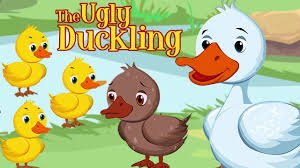Hans Christian Andersen’s The Ugly Duckling is far more than a simple children’s story about an awkward duckling who grows into a beautiful swan—it is a deeply personal allegory that reflects the author’s own struggles with identity, rejection, and ultimate self-discovery. Written in 1843 and published as part of his New Fairy Tales collection, the story was born from Andersen’s lifelong feelings of being an outsider. Born into poverty in Odense, Denmark, Andersen was ridiculed for his lanky frame, large nose, and effeminate mannerisms, which made him a target for bullying. His early years were marked by loneliness and a desperate desire to belong, themes that permeate The Ugly Duckling in ways many modern adaptations overlook. Unlike the sanitized versions popular today, Andersen’s original tale was unflinching in its portrayal of suffering—the duckling endures not just mockery but near-starvation, freezing temperatures, and even violent rejection from both animals and humans. These harsh trials mirror Andersen’s own hardships before he found recognition as a writer, suggesting that the story was as much a self-portrait as it was a universal fable.
The characters in The Ugly Duckling are rich with symbolic meaning, offering insights into societal attitudes and human nature. The titular duckling, often mistakenly perceived as merely “ugly,” is actually misplaced—a cygnet born into a duck’s nest, making his differences innate rather than flaws. This crucial detail transforms the narrative from a simplistic “beauty comes from within” message into a deeper exploration of belonging and self-realization. The duckling’s suffering is not just about physical appearance but about being forced into an environment where he can never fit in, a feeling Andersen knew all too well. The mother duck, initially nurturing, eventually withdraws her protection under pressure from the other farm animals, illustrating how even familial love can be conditional when faced with societal judgment. The hens and the cat, who mock the duckling for his inability to lay eggs or purr, represent rigid societal expectations that demand conformity. The wild swans, who ultimately welcome him as one of their own, symbolize the moment of true recognition—not just external validation but an internal understanding of one’s worth.
The story’s events unfold with a rawness that modern retellings often soften. After being pecked, chased, and scorned, the duckling flees the farmyard, enduring a brutal winter alone. In one of the most poignant and frequently omitted scenes, he is frozen into the ice of a lake, only to be rescued by a peasant—a moment Andersen uses to underscore the duckling’s resilience. The spring thaw brings his metamorphosis, but his transformation into a swan is not a fairy-tale ending in the traditional sense. When the children at the pond declare him the most beautiful of all, the duckling does not revel in his newfound beauty but instead feels a quiet humility, thinking of all the hardship he endured. This ending challenges the reader to consider whether external validation is the true reward or if the journey itself—the survival, the self-acceptance—holds the real value.
Andersen’s tale also carries subtle critiques of class and social mobility. The duckling’s “ugliness” is, in reality, a mismatch of environment and identity—much like Andersen, a poor boy who struggled to navigate the elitist circles of European art and literature. The story’s emphasis on the duckling’s inherent nobility (as a swan) reflects 19th-century European fascination with hidden royalty and inherited worth, yet subverts it by focusing on the emotional cost of the journey. Unlike traditional fairy tales where transformation is often magical or instantaneous, the duckling’s change is slow, painful, and earned, making it one of Andersen’s most psychologically complex works.
Today, The Ugly Duckling resonates across cultures and generations because its themes are universal: the pain of exclusion, the search for identity, and the joy of finding where one truly belongs. Psychologists have used the story to discuss bullying and self-esteem, educators to teach empathy, and artists to explore themes of alienation. Its endurance lies in its honesty—Andersen did not shy away from depicting suffering, but he also offered hope, not through a change in appearance, but through the discovery of self-worth. In an age of social media comparisons and societal pressures to conform, the story’s message is more relevant than ever: true beauty and belonging come not from fitting in, but from understanding and embracing who you are meant to be.
Go to main page


